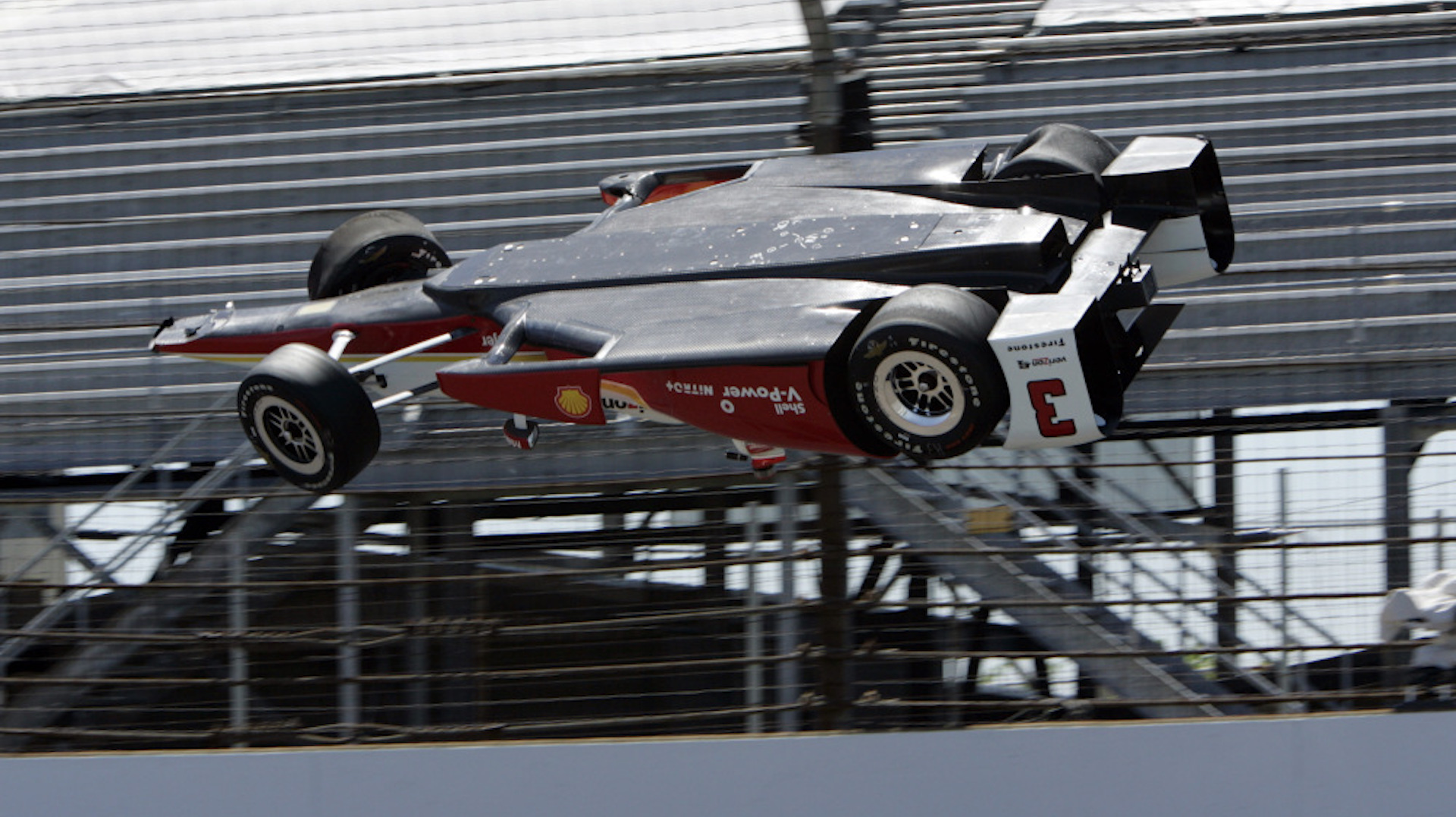

For a long time, IndyCar has been plagued by safety problems. Sometimes their well-intentioned corrections come at the cost of performance. This year, a new mandated domed skid plate replaced the flat one underneath the Dallara chassis. The reason for the change? Cars were flipping like pancakes when they went airborne—four in a single week last season: James Hinchcliffe, Hélio Castroneves, Josef Newgarden and Ed Carpenter.
So a curved underbelly is de rigeur. The dome shape does work, helping keep the cars glued to the asphalt where they belong. But the new design has hindered performance. “Everyone was initially very unhappy,” Allen Miller told us from the Indianapolis Motor Speedway. Miller is the Race Team Leader for Honda Performance Development and a 21-year veteran of the manufacturer’s race efforts. He chose his words carefully, and somewhat kindly, but the subtext was clear. The new aero package sucks. Why, though?
“It really changes the characteristics of the car. The ride height has to be raised to accommodate the curvature, so the car doesn’t handle as well, downforce was harder to come by and everyone from all the teams were very vocal that this was bad. But when it’s a new addition for safety, you have to figure out a way to work with it,” Miller said. And so his team began testing up a storm. After configuring several different options with aero packages, all were put into wind tunnel testing. The results were scrutinized, refined and re-tested.
“This went on for several months,” Miller recounts. “Even after we thought we were good, and the homologated tested items were commissioned, we continued to test to see if there were further refinements to be made.” Miller declined to get into the specifics of what ended up working best, but noted they manipulated wing angles and played with other body kit parts to find the ultimate way to work with the new dome plate. When they finished, the teams – Honda has 17 entrants in this year’s 500 – were pleased. “A lot happier than during the initial test in April,” Miller laughs. Hinchcliffe, one of those Honda entrants, made a storybook comeback from his near-fatal crash to take pole position, a fact that couldn’t make Miller more thrilled.
Another tweak to the rulebook for this year was an increase in the ability to manipulate engine components. “Previously, we didn’t have much of an opportunity there. The specs were the specs. We could change pistons, and valve springs and a few other things, but it wasn’t a lot,” Miller said. This year, also up for alterations are the cylinder heads, and their intake and exhaust ports, as well as the combustion chambers and camshaft profiles.
At this surprising and welcome news, Miller and the rest of the Honda Performance Development crew divvied up the parts to “see what could be done to make each better. It wasn’t a fast process, and we all were coming back together to share what we were learning, but we found some good gains within each of those components.” While the Honda teams don’t get to adjust the innards of their engines – HPD leases them as a package and doesn’t even tell them what’s inside the block – they do ask for, and consider, teams’ inputs when redesigning a powerplant.

“We want their thoughts on performance, power curves, and how we can make them a more drivable engine, but we have to make the best engine for our simulators and then take it to the track to test with,” Miller said. “We can make small, very specific adjustments for individual drivers, unique to their style of driving, but each will get essentially the same engine.” That would be a 2.2-liter V6 twin-turbo, configurable to three power settings, though for the speedway, it’ll generate about 500 horsepower and 300 lb-ft of torque, with the boost capped at 1,300 mbar.
Come race day, Miller and his folks will be at the track at 4:30am. “There’s not much to do at that hour except enjoy breakfast,” he chuckles. “We’re really going that early just to beat the crowds. The teams come in at 5am and we’ll help them grid up and start up around 9am, and re-fire throughout the morning to make sure the engines are staying warm before the start. After that, it’s hands off.” Each Honda team has a dedicated HPD engineer who can help give feedback during the race about fuel mapping, strategies for gaining power when needed and some other aspects. If there’s a dire issue, Miller can be summoned to provide his input. “I listen to all the teams’ radios,” Miller says. “My goal for race day is not to hear my name once. That means I did my job well.”